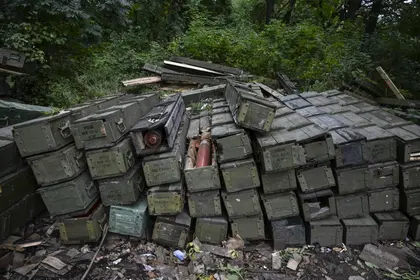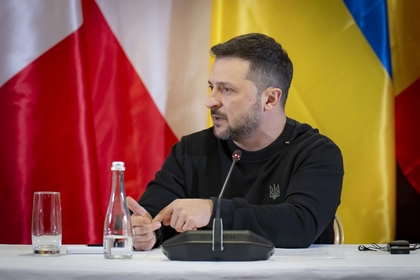It was in early January that U.S. and Ukrainian officials first commented upon noticeable reductions in Russia’s use of artillery fire, which in some places was 75% lower than in previous months. Some U.S. analysts said that the rate of Russian fire had dropped from 20,000 rounds per day to around 5,000 per day on average.
At the time there was no obvious reason for the drop and there was speculation that it was either down to a Russia reassessing its tactical use of artillery or, as other experts believed, it was simply down to them running out of useable ammunition.
JOIN US ON TELEGRAM
Follow our coverage of the war on the @Kyivpost_official.
The latest UK Defense Intelligence assessment seems to support the latter theory.
What is the cause of these shortages?
There are a number of factors that may have led to the shortages Russian Forces are facing.
Firstly, Putin expected a short, sharp resolution of his “special military operation”. The fact that it has lasted months rather than days or weeks, had simply exhausted supplies as the Russian military failed to realize that the Russian doctrine of using overwhelming artillery barrages to secure its objectives would fail.
Secondly, in spite of the pressures applied to its munitions manufacturers to produce replacement ammunition, they have been unable to do so. This failure led to a Russian Presidential Decree on March 3 that “provides measures that will allow the Ministry of Trade and Industry to suspend defense companies that do not fulfil production targets.”

N. Korean Troops Massed in Russia to Enter Ukraine War ’Soon’: Pentagon Chief
Thirdly the acquisition by Ukraine of longer-range weapons, including HIMARS and M270 multi-barreled rocket launchers, enabled strikes against Russian ammunition dumps, such as that in Makiivka on Jan. 5 which destroyed an ammunition storage area and killed hundreds of Russian troops.
How is Russia responding?
There is very little it can do, other than to restrict its use of artillery where it is most needed. As previously reported, we are seeing the increasing presence of old ammunition being used by Russian troops, some produced more than 40 years ago. In addition, it was reported in December that the Kremlin was trying to source ammunition stocks from its few remaining allies North Korea and Iran, a further sign of Russia’s diminished arsenal.
Effects on the frontline
Yevgeny Prigozhin, the head of the mercenary organization Wagner Group, has frequently complained that the Russian Ministry of Defense is intentionally starving his troops of fresh ammunition supplies. It now seems more likely that this is just another example of how Russian military planners have bungled the war effort.
That will be little comfort to the Wagner Group, which has lost thousands of fighters in Ukraine the last two months alone, a senior U.S. official said.
While Russia still has more artillery ammunition available than Ukraine, early western assessments vastly overestimated the amount that Russia had its disposal.
It appears now that, other than its continued assaults on the Donbas cities of Bakhmut and Vuhledar, Russia is focused more on bolstering its defensive fortifications in anticipation of a potential Ukrainian offensive in Donbas or Luhansk.
The striking decline in artillery fire is more evidence of Moscow’s increasingly weak position on the battlefield and could bring the probability of Ukrainian victory on the battlefield one step closer.
You can also highlight the text and press Ctrl + Enter






